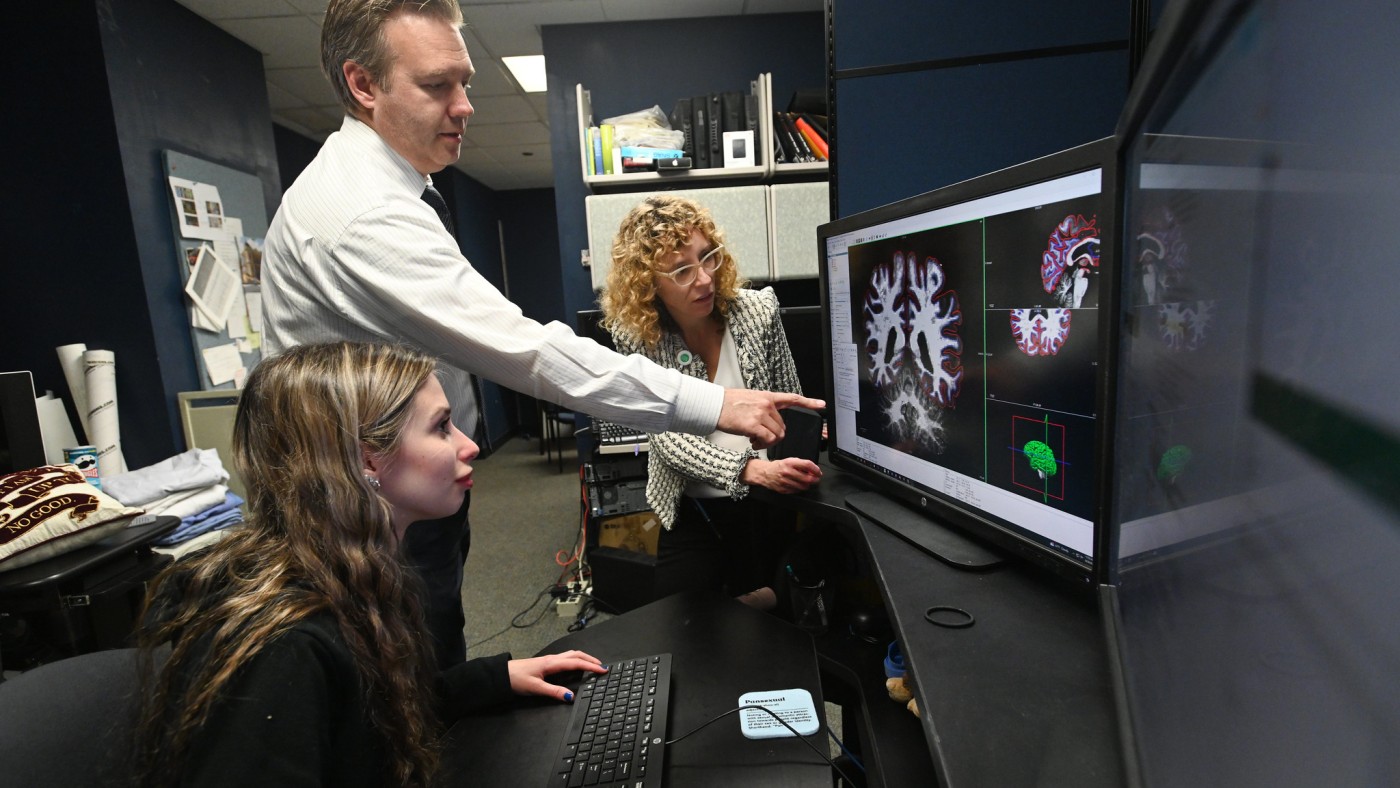Authentic Health Care Through Artificial Intelligence

Artificial intelligence is everywhere. It’s in our cars, our financial services, our workplaces, our institutions of learning and even our hospitals.
While the rapid rise of AI technology has generated uncertainty, concern and even attention from the United States Senate, some Dominican University students are immersing themselves in the positive aspects of AI— particularly, how it can transform health care.
In partnership with Rush University Medical Center’s Epilepsy Center, Dominican student interns are using AI technology—or “machine learning” as it is often called—to read MRIs and as part of research to develop AI programs that can distinguish between different types of seizures. The ultimate goal of the research is to find new clinical markers for epilepsy. These markers will help predict if a patient will develop epilepsy that cannot be managed by medication and can facilitate new treatments.
Working with Neurologist Dr. Rebecca O’Dwyer and Rush Professor Dr. Travis Stoub, students collect data and analyze and process MRI brain images in the center’s Neuroimaging and Neuroengineering Laboratory.
The AI technology is used to produce information the naked eye can’t see, explained O’Dwyer. It also speeds up processes due to the large number of scans that are created.
Junior neurobiology major Felicity Sampson, who hopes to attend medical school and study neurology, examines MRI scans in the lab.
AI technology measures layers of the brain, trying to accurately measure brain matter, Sampson explained. But, at this time, it's not perfect. Sometimes, for example, the AI will identify white brain matter as gray matter, so Sampson uses a computer to correct the scan.
“It’s been really rewarding,” Sampson said of the internship. “I’ve learned a lot about how differences can be so slight, but so impactful. And it’s just cool to see the data collection side of science.”
Pablo Cesar Bedolla Ortiz, a junior majoring in math and computer science, is scheduled to work with engineers to develop and train AI models to read MRIs.
“AI can find patterns that, for us humans, can be difficult to see and find,” Bedolla Ortiz said. “These computers can do it in a second.”
Last semester, during an internship with a personal finance company, he saw how AI can make financial recommendations to customers. But he hopes to do more.
“I want to dive in and see how you can use computer science to do something better in our society,” Bedolla Ortiz said. “Using AI for something other than trying to manipulate people for financial gain is something we should emphasize.”
These internships show the many possibilities for students within STEM-focused programs, O’Dwyer noted.
“When we think about STEM (science, technology, engineering and math) careers, a lot of people are focused on becoming a doctor, but there is still so much more to clinical medicine—and other opportunities that can be just as impactful, if not more so,” O’Dwyer said. “I hope students gain appreciation of all that goes on in the background to make clinical tools possible to help the patient.”